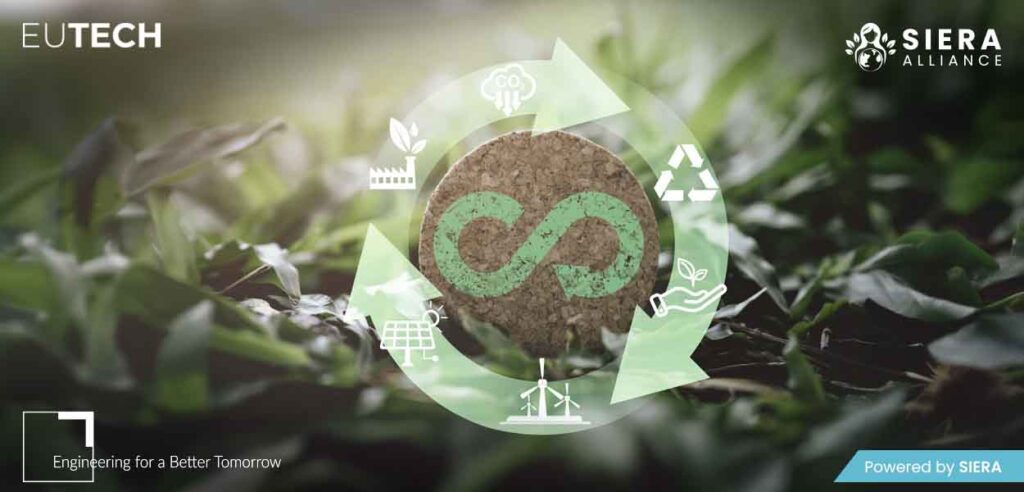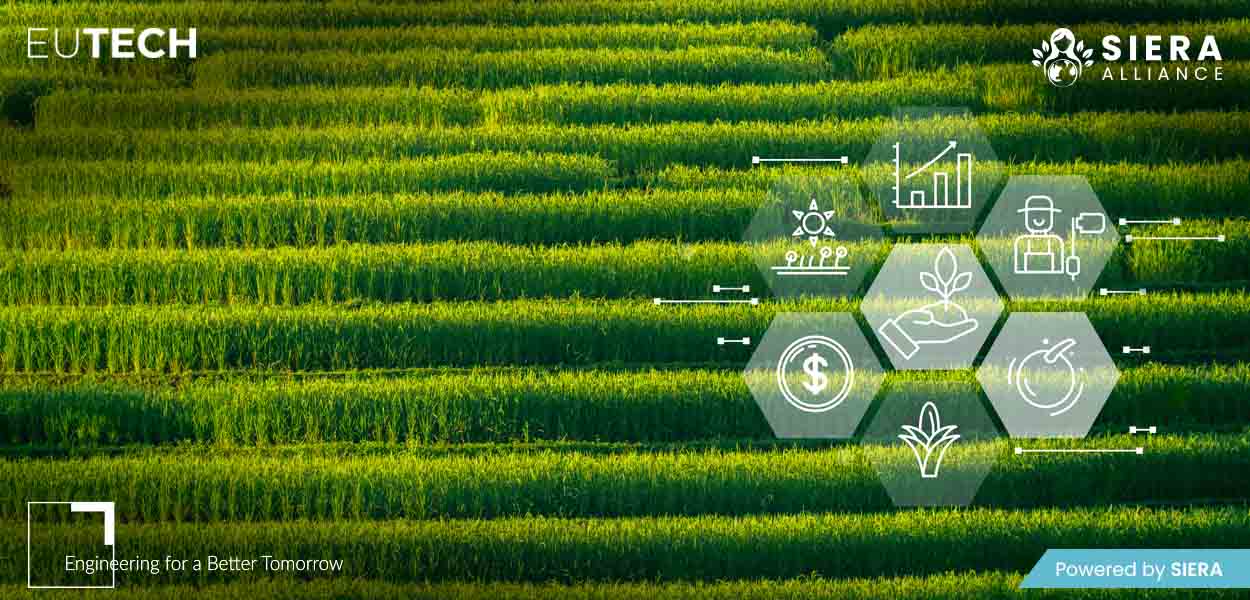Why Circular Economy Matters in Agriculture
The agricultural sector is a cornerstone of global sustainability but faces challenges such as waste generation, biodiversity loss, and resource inefficiency. By adopting circular economy models, agriculture can transition from a linear “take-make-dispose” system to a more sustainable “reuse-reduce-recycle” approach, aligning with global sustainability standards like ESRS E5.
On October 25, 2024, the EUTECH – Agriculture & Food Council powered by SIERA Alliance hosted a webinar titled “Implementing Circular Economy Models in Agriculture.” Moderated by Dr. Igor Gladkov, the event featured insights from keynote speaker Bhagyashree Pardeshi and panelists Shyam Krishna Suwal, Lou Seigneur, and Zsolt Pasztor. The session highlighted actionable strategies to drive sustainability through regenerative agriculture and sustainable farming solutions.
Key Challenges in Agriculture’s Transition to Circularity
1. Supply Chain Gaps
Globally, one-third of food produced for human consumption is lost or wasted. Poor integration across supply chains limits opportunities for agricultural waste recycling and resource recovery.
2. Technological Barriers
Lack of advanced processing technologies hinders the ability to convert agricultural waste into valuable by-products like biofertilizers or bioenergy.
3. Resource Inefficiency
Agriculture consumes 72% of global freshwater resources, with traditional irrigation methods leading to significant waste. Overuse of fertilizers and pesticides exacerbates environmental degradation and raises costs.
4. Biodiversity Loss
Agriculture is responsible for 80% of global deforestation, with wildlife populations declining by an average of 69% since 1970. Loss of biodiversity disrupts soil health, nutrient cycling, and carbon sequestration.
5. Regulatory and Financial Barriers
The absence of standardized regulations and financial incentives discourages farmers from adopting eco-friendly farming practices, stalling progress toward a circular agricultural system.

Practical Solutions for Circular Agriculture
1. Recycling Agricultural By-Products
Transforming food waste into valuable products like animal feed, compost, and bioenergy aligns with sustainable agriculture practices. By implementing localized recycling facilities, farmers can reduce waste while generating additional income.
2. Adopting Precision Agriculture
Using IoT sensors, drones, and AI-driven irrigation systems minimizes resource use and maximizes efficiency. For example, precision irrigation reduces water wastage by 25%, aligning with sustainable water resource management goals.
3. Promoting Biodiversity Conservation
Practices like agroforestry and no-till farming enhance biodiversity, improving soil fertility and reducing the need for chemical inputs. Biodiverse ecosystems sequester more carbon and support healthier crops.
4. Incentivizing Sustainable Practices
Subsidies and green financing, such as EU funds for bioenergy projects, enable farmers to adopt sustainable agriculture practices without financial strain.
5. Integrating Advanced Waste Management
Technologies like anaerobic digestion convert crop residues into biofuels and organic fertilizers. These systems promote farm waste management while reducing dependency on synthetic fertilizers.
Transformation Opportunities in Agriculture Sector
Implementing circular economy principles in agriculture unlocks multiple benefits:
| Transformation Area | Benefits | Impact |
| Resource Optimization | Reduces resource consumption and waste production. | Precision agriculture saves 25-40% water and improves crop yields. |
| Economic Benefits | Generates revenue through by-product utilization. | Farmers can increase income by 20% through recycling initiatives. |
| Environmental Protection | Minimizes pollution and enhances biodiversity. | Reduces greenhouse gas emissions by 30%. |
| Sustainable Supply Chains | Enhances efficiency and reduces losses. | Supply chain optimization cuts food waste by 15% globally. |
| Increased Consumer Trust | Aligns with eco-conscious consumer preferences. | Products from eco-friendly farming practices attract premium markets. |

Best Practices for Circular Agriculture
- Implement Smart Irrigation: Use advanced irrigation techniques to conserve water and protect soil health.
- Leverage Technology: Adopt digital tools to monitor resource usage and track environmental impacts.
- Engage in Collaborative Models: Partner with recycling companies to manage agricultural waste effectively.
- Enhance Soil Health: Incorporate organic fertilizers and crop rotation to improve soil quality.
- Promote Consumer Awareness: Educate consumers on the benefits of sustainable agriculture to foster market demand for eco-friendly products.
Upcoming Events and Opportunities
Stay informed about upcoming events hosted by the SIERA Academy. For more insights and networking opportunities, visit the SIERA Alliance Event Calendar. Join us in driving sustainable transformation in agriculture.
Conclusion: A Circular Future for Agriculture
Transitioning to circular economy models in agriculture is not just an environmental imperative but also an economic opportunity. By adopting innovative technologies, fostering collaboration, and prioritizing biodiversity conservation, the sector can achieve long-term sustainability while addressing global food security challenges.
Collaborating with organizations like SIERA Alliance and EUTECH enables the implementation of impactful solutions that benefit farmers, consumers, and the planet.
To learn more about how SIERA Alliance can support your journey toward sustainable agriculture, visit our website. Join us in building a responsible future for agriculture.







